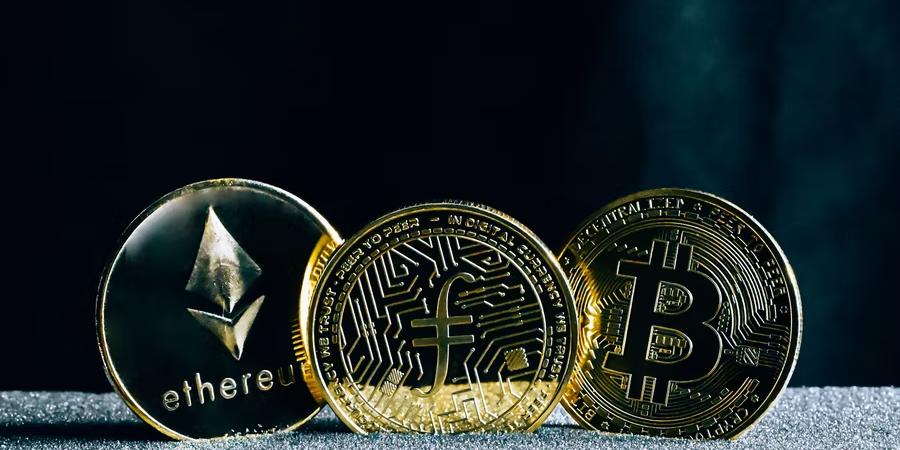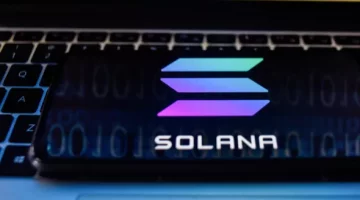The Rise of Initial DEX Offering (IDO) - Meaning, Benefits and Risks of an IDO

What is IDO’s meaning in crypto? What are the benefits and risks of an IDO? In this article, we Will discuss the meaning of IDO as well as it’s benefits & risks.
As the crypto world evolves, new practices are in place now - especially liquidity exchanges. Let us explain.
What Is IDO’s Meaning in Crypto?
Initial DEX offerings or IDOs are basically a means to launch crypto tokens through decentralized liquidity exchanges.
Meaning that, once an IDO coin is launched via Uniswap or Binance, it can be traded by anyone without much external control. That's why IDOs are taking the spotlight for now.
Before we delve into details, let's do a quick walkthrough of what it means to launch tokens. In general - ICO, IEO, STO, and IDO are popular among investors particularly. Setting up funds for a business was a hassle back in the day with traditional banking methods. But now, as cryptocurrencies become mainstream, companies are starting to use crypto tokens to raise millions.
IDO is the latest succession, it is far better in most aspects - faster, transparent, and provides instant liquidity access. Here are a few noteworthy IDO examples:
Successful IDO Projects
The Raven Protocol
An AI-based decentralized training protocol - they launched IDO back in 2019 and haven't looked back since. The Raven Protocol was one of the first ones to do so and even acknowledged the risky decision.
A product that depends on blockchain technology to bring revolutionary changes in AI, sufficient funds are needed. With their signature Raven Token on IDO, contributors raised over $500k in the long run. Under 24 hours, a total of 3% Raven Token was assigned, each coin went up to 0.00005 BNB in value.
Launch X
Another highlight, a decentralized IDO launchpad platform helping startups and individuals raise capital across blockchains. A leading name in the Binance Smart Chain economy, the company is powered by huge crypto reinvestment hubs - Marshland Capital, Raptor Capital, and Vendetta Capital.
Recently, Launch X closed at $600k for their new cross-chain launchpad on the website. David Marshall, the co-founder of Marshland Capital has optimistic views about the future of Launch X - hoping that a public IDO would do wonders.
UMA Protocol
Universal Market Access (UMA) protocol allows DeFi developers to issue and trade synthetic assets on the Ethereum-based platform. Not long ago, a token was released publically for an offering of $0.26 per token via an IDO supported exchange, Uniswap. UMA pulled over $535k in Ethereum.
Anyhow, the calculations didn't go as planned. The graph of the token went through a sharp bonding curve and in hindsight, the coin went more than $2 after going public - disappointing traders. This wasn't UMA's fault entirely, it had more to do with the exchange.
MAID
MAID is an emerging DeFi platform that runs a DEX offering on the MISO platform of SushiSwap (a decentralized exchange).
On 4th August, MAID IDO generated 448 ETH in just 20 minutes, going far above expectations. People on Twitter were lined up to participate in the Dutch Auction type. 30k $MAID coins were set in line, each one started at 0.015 ETH.
SushiSwap, a competitor to UMA - another decentralized exchange agency operating on Ethereum - encourages users to openly trade with MAID or keep such assets. An important takeaway is realizing what the selling point for MAID was. The anime appeal combined with easy registration (IDO) generated profitable results.

How it is Different - Compared with IEO/ICO/STO:
You might be wondering, what difference does an IDO make? It might seem the same but there's more to it. Keep reading.
To sum it up, IDO offers better liquidity returns. Older crypto funding models such as - initial coin offerings (ICOs), security token offerings (STOs), and initial exchange offerings lack (IEOs) behind in terms of accessing funds and the overall mechanism.
If we go into detail, ICOs and IDOs have a lot of overlapping features but staggering differences too. ICOs are regulated centralized exchanges while IDOs are free-for-all and decentralized. But we won't deny that ICOs raise far more money. IDOs are quick but high fees along with "stages to access" make them inaccessible for some investors.
To learn more about ICOs, click here.
However, IDOs are popular in decentralized (DeFi) markets and non-fungible token (NFT) based projects. IEOs rely on centralized exchanges (CEX) as well. Any ruling by CEX needs to be followed strictly:
- Do not go over fundraising limits
- Token should be listed separately
- Restricted pools
With IDOs, open a pool and trade freely. Lastly, let's talk about STO - it deals with asset-backed security tokens. When looking to convert, STOs are not recommended - low liquidity due to centralization policies. Hence, IDOs win over.
Benefits of an IDO - Know Well
Know what you're getting yourself into - proper crypto insight is necessary before making any sort of financial decision. Read thoroughly and evaluate:
Clear Fundraising
The most notable "pro" point, it's open to everyone and everything is transparent. Participating in an IDO-based fundraising allows multinational capital funds to invest, as well as the common person.
Usually, whenever a token goes public, private investors buy it in bulk and then sell it later for a higher price - this drawback led to lots of precautionary investment decisions being taken. Small businesses didn't even bother to go through auctions. Fortunately, an IDO-based fundraising approach revolutionized everything.
Swift Liquidity
Let us brush up on your concepts a bit, liquidity defines how easily and efficiently you can convert an asset or security to cash. With IDOs, tokens get in a liquid state instantly - even the price stays stable that way. With other fundraising models, you need to wait a while - pay exchange fees, and then wait for approval. With IDOs, as we've said - it is decentralized.
Risks of an IDO - Be Aware
Everything about IDOs might seem ideal right now but unfortunately, there are a few setbacks that you need to be aware of. It's a new fundraising model after all.
Authority
A decentralized platform has its own set of problems too. No regulation whatsoever can cause prices to fluctuate massively, financial forecasts are unpredictable. So, research before investing. With no proper authority to look over, you should expect such problems to occur:
- The price of a token fluctuates massively at the very first swap
- No audit. There are no statistics to see how many tokens one's buying
- The bonding curve model can't be easily analyzed
The Cost
Gatekeeping. Yes, investors tend to withhold token prices in a way because there's no limit set - buy as much as you want. And then a bonding curve graph shows up, leaving a lot of scattered data. Some traders even use technology to their advantage.
Once at BZRX, a decentralized Ethereum-based exchange platform, a group brought a bot along with them. The algorithm was fixed in a way that they bought all the project tokens at the initial price. With the surplus, they sold the tokens later - getting a huge profit by using just a bot.
The Future of IDO
The IDO mechanism was founded to be the "better" version of its predecessors (ICO, IEO, STO) - has it succeeded? We can't tell yet, it has only been a few years. So far, the concept of decentralized exchanges where you can quickly raise funds and not go through any processing steps seems idealistic but the subtle loopholes can't be ignored.
With just a few control mechanisms in place, IDOs can be trusted. Otherwise, token prices will keep on fluctuating, you'll have to make risky decisions. To conclude, IDOs are definitely here to stay nonetheless - better start investing!
Related: Crypto & Blockchain Guides | ICO Guides | Crypto News Today
More to Read:
Previous Posts:






